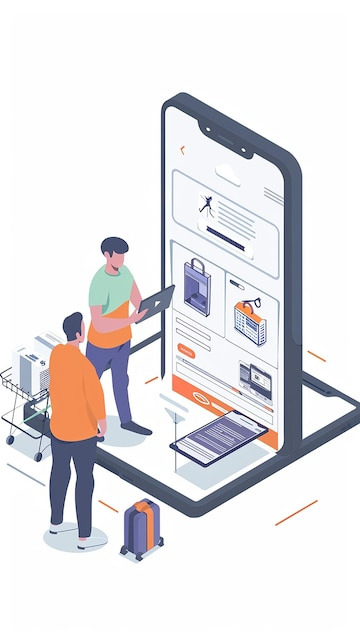#what is shopify business model
Explore tagged Tumblr posts
Text
How to Build a Successful Shopify Business Model from Scratch

Starting a Shopify business from scratch can be an exciting yet challenging endeavor. With the right approach and a clear understanding of your business goals, you can create a successful e-commerce store that attracts customers and drives revenue. This guide will provide you with the essential steps and strategies to build a successful Shopify business model from scratch, helping you navigate the complexities of starting and growing an online store.
Understanding the Basics of Shopify
What is Shopify?
Shopify is a leading e-commerce platform that allows individuals and businesses to set up and manage their online stores. It provides a wide range of tools and features, including customizable templates, secure payment gateways, inventory management, and marketing tools, making it an ideal choice for entrepreneurs looking to launch an online business.
Why Choose Shopify for Your Business?
Shopify offers several advantages for new businesses, including ease of use, scalability, and a robust support system. With Shopify, you don’t need any technical expertise to start your online store, and as your business grows, you can easily expand your store's capabilities with Shopify's extensive range of apps and integrations.
Identifying Your Niche and Target Audience
Choosing a Profitable Niche
Selecting the right niche is crucial for the success of your Shopify business. A niche is a specific segment of the market that you target with your products or services. To choose a profitable niche, consider your interests, market demand, competition, and potential profit margins. Conduct thorough market research to identify trends and gaps in the market that your business can fill.
Understanding Your Target Audience
Once you’ve identified your niche, it’s important to understand your target audience. Who are your ideal customers? What are their needs, preferences, and pain points? Understanding your audience will help you tailor your products, marketing strategies, and customer service to meet their specific needs, increasing the likelihood of conversions and customer loyalty.
Setting Up Your Shopify Store
Selecting a Shopify Plan
Shopify offers different pricing plans to suit various business needs. Start by choosing a plan that aligns with your budget and business goals. The basic plan is ideal for new businesses, while the advanced plans offer more features and lower transaction fees, which can be beneficial as your business grows.
Choosing a Domain Name
Your domain name is your online identity, so choose one that is memorable, relevant to your brand, and easy to spell. A good domain name can help establish your brand’s credibility and improve your store’s visibility in search engines.
Designing Your Store
Selecting a Theme
Shopify provides a variety of free and paid themes that you can use to design your store. Choose a theme that complements your brand’s style and is optimized for mobile devices. A visually appealing and user-friendly store design can significantly impact your customers' shopping experience and influence their purchasing decisions.
Customizing Your Store’s Layout
Customize your chosen theme to match your brand’s identity. This includes adding your logo, selecting color schemes, and arranging your products in a way that is visually appealing and easy to navigate. Pay attention to the user experience by ensuring that your store’s layout is intuitive and all elements are easy to access.
Creating a Compelling Product Catalog
Sourcing Quality Products
The quality of your products will directly impact your brand’s reputation and customer satisfaction. Whether you are creating your products or sourcing them from suppliers, ensure they meet high-quality standards. Research potential suppliers read reviews, and order samples to evaluate the quality before listing products in your store.
Writing Effective Product Descriptions
Product descriptions play a crucial role in influencing customers’ purchasing decisions. Write clear, informative, and persuasive descriptions that highlight the key features and benefits of each product. Use bullet points to break down information and include keywords that your target audience is likely to search for to improve your store’s SEO.
High-Quality Product Images
Images are one of the most important aspects of your online store. Use high-quality images that showcase your products from multiple angles. Include zoom functionality so customers can view details up close, and consider adding videos to provide a more comprehensive view of your products.
Implementing Effective Marketing Strategies
Search Engine Optimization (SEO)
SEO is essential for driving organic traffic to your Shopify store. Optimize your store’s content by including relevant keywords in product descriptions, titles, and meta tags. Create valuable content, such as blog posts and guides, that can help attract potential customers and improve your store’s search engine ranking.
Leveraging Social Media Marketing
Social media is a powerful tool for promoting your Shopify store and engaging with your audience. Identify which platforms your target audience frequents and create a social media strategy to connect with them. Share product updates, promotions, and engaging content that resonates with your audience to drive traffic and increase sales.
Utilizing Email Marketing
Email marketing is an effective way to nurture leads and build relationships with your customers. Collect email addresses through pop-up forms, sign-up forms, and check-out processes. Send regular newsletters, promotional offers, and personalized recommendations to keep your audience engaged and encourage repeat purchases.
Enhancing Customer Experience and Retention
Offering Exceptional Customer Service
Customer service is a critical component of any successful business. Offer multiple channels for customer support, such as live chat, email, and phone support. Respond promptly to customer inquiries and resolve issues efficiently to build trust and loyalty.
Implementing a Customer Loyalty Program
A customer loyalty program can incentivize repeat purchases and increase customer retention. Offer rewards, such as discounts, free shipping, or exclusive access to new products, for customers who make repeat purchases or refer new customers to your store.
Encouraging Customer Reviews and Testimonials
Positive reviews and testimonials can significantly influence potential customers’ purchasing decisions. Encourage satisfied customers to leave reviews on your product pages and social media platforms. Respond to reviews—both positive and negative—to show that you value customer feedback and are committed to improving your business.
Monitoring and Analyzing Your Business Performance
Using Shopify Analytics
Shopify provides built-in analytics tools that offer valuable insights into your store’s performance. Monitor key metrics such as traffic sources, conversion rates, average order value, and customer retention. Use this data to identify strengths, weaknesses, and opportunities for growth.
A/B Testing and Continuous Improvement
A/B testing involves experimenting with different elements of your store, such as headlines, product descriptions, images, and calls to action, to see which versions perform better. Regularly test and optimize your store to improve user experience, increase conversions, and maximize sales.
Conclusion
Building a successful Shopify business model from scratch requires strategic planning, a strong understanding of your niche, and continuous improvement. By leveraging a Shopify mobile app builder, you can enhance the customer experience, drive engagement, and increase sales. Focus on creating a well-designed store, implementing effective marketing strategies, and using data-driven decisions to achieve long-term success. With the right approach, your Shopify store can become a thriving online business.
#shopify business model#shopify business strategy#shopify revenue model#shopify model#business model of shopify#shopify revenue streams#what is shopify business model#business model shopify
0 notes
Note
We’re witnessing firsthand what Daniel being chronically offline means for stuff like this. There’s literally no way he’s seen anything Andrew has done recently (bc literally I haven’t either I just know he’s not liked) but also his team is just absolutely not vetting anything that goes out all. If you paid attention to the guest list for the Enchanté private party, it was just more caa people/Nick’s friends, the loyalist people and the ritz brothers (based on recent linkedin posts). Like it’s all people patting each other on the back and working with their friends and employing people they know, instead of people who are competent outsiders who would’ve caught something as obvious as using Andrew for the Shopify ad. Because this wasn’t just Daniel posting him hanging out with Andrew, it was clearly an ad fulfillment with Shopify for putting on the event, which is so much worse because that means everyone at Enchanté approved Andrew and let the video go out
I fully, completely agree with the whole working with friends and employing people they know sentiment. It's one of the things that's annoyed me the most over the course of Daniel's career, especially the last few years.
And from a human point of view, I totally understand being at a point in your life/career/fame where if you are in a position to employ/enrich your friends (and I mean that in a loving way) why would you not want to!? In some cases I think it's been a really sweet move too - e.g. I really loved the way he did the WA Drive the Dream stuff with (other) Blake. But I think a lot of the choices to work with friends hasn't been totally beneficial for Daniel's career (e.g. Michael Italiano as his trainer).
I don't have linkedin so I miss a lot of the stuff on there, but even looking at the fashion girlies who were at the enchante event I was pretttty sure most of them that attended were there through Jacquelyn Jablonski (Ritz brother's wife) who is a model. And honestly if that's what they want to do for their launch event then cool whatever, I don't think it makes sense from a business pov but you do you caa/loyalist/blake. But I totally agree that we're seeing the downside of it here in this situation, and that this should never have even gotten to the stage of needing approval to post because it never should have happened in the first place - and wouldn't have happened had they had a more diverse and experienced team.
29 notes
·
View notes
Text
youtube
Learn why Buyist's conversion rates are 5-10x higher than Shopify's average, and discover the platform's unique origins in TV direct response marketing. Greg shares invaluable insights about attribution modeling, marketing analytics, and why "build it and they will come" doesn't work in modern eCommerce. Whether you're a seasoned marketer or considering launching an online store, this episode reveals crucial insights about traffic acquisition, marketing spend, and the real costs of eCommerce success. Stay tuned for our next episode where we'll dive into AI with Greg!
Chapters: 0:00 intro 0:33 What is Buyist? 2:02 How to Get Traffic to Your eCommerce Store 4:05 eCommerce Analytics and The Importance of Data 7:26 Marketing and Testing foreCommerce 9:10 Starting an eCommerce Business
18 notes
·
View notes
Text
What kind of online business?
Online businesses vary greatly in terms of their structure and focus, catering to a wide range of niches and industries. Here are some different categories to explore:
E-commerce: This involves the sale of physical products online through platforms like Shopify, Amazon, or Etsy.
Digital Products: Creating and selling digital products such as ebooks, online courses, software, or downloadable templates.
Subscription Services: Providing subscription-based services where customers pay a recurring fee for access to exclusive content, products, or services.
Affiliate Marketing: Promoting products from other companies and earning a commission for each sale made through your referral.
Dropshipping: Operating an online store without the need to hold inventory. When a customer makes a purchase, the product is shipped directly from the supplier to the customer.
Freelancing: Offering services like writing, graphic design, web development, or consulting on platforms such as Upwork or Fiverr.
Blogging/Vlogging: Creating content within a specific niche and monetizing it through advertising, sponsored content, or affiliate marketing.
App Development: Developing and monetizing mobile apps through app stores or subscription models.
Online Consulting/Coaching: Providing expertise in a particular field through one-on-one coaching sessions, webinars, or group coaching programs.
Print-on-Demand: Designing custom products like t-shirts, mugs, or phone cases and selling them online without the need to hold inventory.
These are just a few examples, and the opportunities are vast. The most suitable type of online business for you will depend on your interests, skills, resources, and target audience.
onlineshopping #onlineshop #fashion #business #entrepreneur #digitalmarketing #onlinemarketing #blogger #style #hustle #love #entrepreneurlife #entrepreneurship #workfromhome #stylish #dresses #makemoneyonline #smallbusiness #marketing #moda2019 #followforfollowback #likeforlikeback #dressesforsale #onlineboutiqueshopping #liked #soirée #womeninbusiness #hustleharder #photooftheday #motivationalquotes

#digital marketing#youtube video#website seo#smallbusiness owner#ecommerce#seo#marketing#original art#online business
2 notes
·
View notes
Text
honestly tho, I complained abt this on twitter already, but I am so entirely baffled by the whole bigcartel thing. and not even in just a 'screwing over artists' way but in a 'screwing over their own business model' way. I genuinely don't know how they expecting 'raising their prices by literally 50% in a financial crisis' to not go over any way other than terribly given their entire business model lmao
like their highest tier now costs the same (actually technically $1USD more lol) as a shopify sub. you know, shopify, probably the best and most customisable online shop platform there IS. and you're trying to charge as much as them for a shop platform that doesn't even let people post reviews for your products???? what???
they just do not understand their own business' audience on even a basic level. bigcartel was never popular cause they were the best, they were just a good affordable option for smaller creators who couldn't afford shopify but didn't want to pay out the nose in fees with etsy. the second they stop being affordable no ones going to bother with it
#I am curious to see what kind of damage control they try to do to resolve this tho#cause most ppl I've seen who used bigcartel have been either moving platforms entirely or downgrading their sub#so they're obviously no getting what they'd hoped for lol#sorry for the mini rant but corporations are so fucking stupid. and I love complaining
2 notes
·
View notes
Text
Owning your Own TV Channel
I. Introduction A. Definition of an Own TV Channel B. Significance for Entrepreneurs
II. Benefits of Having Own TV Channel A. Control Over Content B. Brand Visibility and Recognition C. Direct Communication with Audience D. Monetization Opportunities
III. Steps to Launching an Own TV Channel A. Market Research and Target Audience Analysis B. Content Creation and Curation C. Technical Setup and Broadcasting Platform D. Promotion and Marketing Strategy
IV. Content Ideas for Entrepreneurial TV Channels A. Interviews with Successful Entrepreneurs B. Educational and How-to Videos C. Industry News and Updates D. Product Demonstrations and Reviews E. Behind-the-Scenes Footage
V. Monetization Strategies for Entrepreneurial TV Channels A. Advertisements and Sponsorships B. Subscription Model C. Merchandise and Product Sales D. Affiliate Marketing
VI. Challenges and Solutions A. Initial Investment and Budgeting B. Content Quality and Production Constraints C. Competition and Market Saturation D. Audience Engagement and Retention
VII. Case Studies of Successful Entrepreneurial TV Channels A. GaryVee TV B. Bloomberg TV C. Shopify TV
VIII. Tips for Sustaining and Growing Your Own TV Channel A. Consistent Content Schedule B. Audience Interaction and Feedback Incorporation C. Adaptation to Emerging Trends and Technologies D. Collaborations and Partnerships
IX. Conclusion A. Recap of Benefits and Opportunities B. Encouragement for Entrepreneurial Ventures in TV Broadcasting C. Final Words of Advice
In today's digital age, the concept of having one's own television channel has transcended the traditional bounds of broadcasting. For entrepreneurs, the prospect of owning a TV channel represents a unique opportunity to engage with their audience in a dynamic and immersive manner. In this article, we explore the intricacies of launching and managing an entrepreneurial TV channel, delving into its benefits, challenges, and potential strategies for success.
Introduction
'You can also try this product
Own TV channel for entrepreneurs

In the introductory section, we'll define what constitutes an own TV channel and highlight its significance for entrepreneurs in today's business landscape.
Definition of an Own TV Channel An own TV channel refers to a platform where entrepreneurs can broadcast content tailored to their specific niche or industry. Unlike traditional television networks, own TV channels are often digital platforms accessible through the internet, offering entrepreneurs unprecedented control over their content and audience engagement.
Significance for Entrepreneurs Entrepreneurs can leverage their own TV channels as powerful tools for brand building, audience engagement, and revenue generation. By creating compelling content that resonates with their target audience, entrepreneurs can establish themselves as thought leaders in their respective industries and cultivate a loyal following.
'You can also try this product
Own TV channel for entrepreneurs
Benefits of Having Own TV Channel
In this section, we'll explore the various advantages that come with owning a TV channel for entrepreneurs.
Control Over Content One of the primary benefits of having an own TV channel is the ability to maintain full control over the content that is broadcasted. Unlike traditional media outlets...
[Continue expanding on the benefits, utilizing examples and case studies where appropriate.]
Steps to Launching an Own TV Channel
Launching an own TV channel requires careful planning and execution. In this section, we'll outline the essential steps involved in the process.
Market Research and Target Audience Analysis Before launching a TV channel, entrepreneurs must conduct thorough market research to identify their target audience and understand their preferences...
[Elaborate on each step, providing practical advice and insights.]
Content Ideas for Entrepreneurial TV Channels

Creating engaging and relevant content is essential for the success of an entrepreneurial TV channel. In this section, we'll explore various content ideas that entrepreneurs can incorporate into their programming.
Interviews with Successful Entrepreneurs Featuring interviews with successful entrepreneurs...
[Detail each content idea, offering creative suggestions and potential formats.]
Monetization Strategies for Entrepreneurial TV Channels
'You can also try this product
Own TV channel for entrepreneurs

Monetizing an own TV channel is crucial for sustaining its operations and generating revenue. In this section, we'll discuss different monetization strategies that entrepreneurs can implement.
Advertisements and Sponsorships Advertising and sponsorships are common revenue streams for TV channels...
[Discuss each monetization strategy, highlighting its pros and cons.]
Challenges and Solutions
Despite its potential benefits, launching and managing an own TV channel comes with its fair share of challenges. In this section, we'll identify common obstacles and provide practical solutions.
Initial Investment and Budgeting One of the biggest challenges entrepreneurs face when launching a TV channel is securing the initial investment...
[Address each challenge and offer actionable solutions.]
Case Studies of Successful Entrepreneurial TV Channels
Examining real-world examples of successful entrepreneurial TV channels can provide valuable insights and inspiration. In this section, we'll analyze case studies of notable channels.
GaryVee TV GaryVee TV, founded by entrepreneur Gary Vaynerchuk...
[Provide in-depth case studies, highlighting key strategies and successes.]
Tips for Sustaining and Growing Your Own TV Channel
In the final section, we'll offer practical tips for entrepreneurs looking to sustain and grow their own TV channels over the long term.
Consistent Content Schedule Consistency is key when it comes to maintaining audience engagement...
[Offer actionable tips and advice for sustained growth.]
Conclusion
In the conclusion, we'll recap the key points discussed in the article and offer final words of encouragement for entrepreneurs embarking on their own TV channel ventures.
With the outline provided, let's delve into the details of each section to provide a comprehensive guide for entrepreneurs interested in launching their own TV channels.
Disclaimer: There are affiliate links to the best product in this article which may generate some profit for me
3 notes
·
View notes
Text
The Future Of Online Shopping
"CNBC Marathon explores how companies like Amazon, Walmart and their competitors are shifting their marketing and business strategies to compete in today’s economy.
Quietly launching its app in September 2022, it only took Temu a few weeks to top app store charts, edging out Amazon, Walmart and even fast-fashion brand Shein. By February 2023, the 5-month-old company made its TV debut during Super Bowl LVII, airing two commercial spots totaling an estimated $14 million. With an annual advertising budget of about $1.4 billion, Temu is focused on aggregating a user base of nearly 100 million people by year-end.
Walmart employs more people than any other company in the world and is the country’s largest grocer. But when it comes to e-commerce, Amazon is the clear leader, with 39.5% of the market share compared to Walmart’s 7%. Now Walmart has ambitious new plans, and new leadership, to try and catch up.
Livestream shopping took China by storm during the pandemic, growing into an estimated $423 billion market in 2022. The trend has caught on more slowly in the U.S., but now Amazon, TikTok, YouTube and Shopify are making big investments in hopes it takes off. CNBC goes behind the scenes with creators like Myriam Sandler to find out what it’s like to sell via livestream, and what it’ll take for the emerging model to become a mainstream way that U.S. consumers shop.
Chapters:
00:00 Introduction
00:37 How Temu Makes Money From $10 Smartwatches from China (Published August 2023)
16:57 How Walmart Is Betting Big On Stores To Catch Amazon In E-commerce (Published June 2022)
34:26 Will Live Shopping On TikTok, Amazon And YouTube Take Off In The U.S.? (Published February 2023) "
Source: CNBC
#mktmarketing4you#distributionchannels#HoshinPlanning#Leanmethods#marketing#M4Y#lovemarketing#IPAM#ipammarketingschool#Kanban#ContingencyPlanning#virtual#volunteering#project#Management#Economy#ConsumptionBehavior#BrandManagement#ProductManagement#Logistics#Lifecycle
#Brand#Neuromarketing#McKinseyMatrix#Breakevenanalysis#innovation#Facebook#icebergmodel#EdgarScheinsCultureModel#STARMethod #VRIO #7SFramework #gapanalysis #AIDAModel #SixLeadershipStyles #MintoPyramidPrinciple #StrategyDiamond #InternalRateofReturn #irr #BrandManagement #dripmodel #HoshinPlanning #XMatrix #backtobasics #BalancedScorecard #Product #ProductManagement #Logistics #Branding #freemium #businessmodel #business #4P #3C #BCG #SWOT #TOWS #EisenhowerMatrix #Study #marketingresearch #marketer #marketing manager #Painpoints #Pestel #ValueChain # VRIO #marketingmix
Thank you for following All about Marketing 4 You
youtube
2 notes
·
View notes
Text
I’ve probably written my 2024 todo list 1000 times. Pieces of paper in my purse all detailing the same thing because I need to see it into my brain (and I��m bored at work).
I’ve narrowed it down to the first 3 things of importance:
#1: Ghost mannequin photos.
Right now I have 3D renders on my website and they, along with my Shopify theme, lowkey makes my business look fake and scamming.
The photos will be the last thing ppl see before they buy and I don’t want anything to deter them away from clicking that checkout button.
Since I won’t be using models, ghost mannequin photos are the next best thing.
$240 for 3 photos.
#2: User Generated Content.
People want to see people. They want to see any kind of social proof either in the form of text reviews or video reviews however video reviews do better bc ppl get to see someone try on the product in real time.
I have a UGC creator that charges $100 per video and 30% of the total for usage rights for 90 days. Meaning I can use it in ads. I can start off with one video and see how I like her.
$130 for 1 video and 90 days of usage rights
#3: Restock my best seller.
In retrospect this should be #1 right? Wrong! I’m broke bby and the restock costs $1400 rounded up. I ain’t got that. However if I do #1 and #2 right, I’ll sell enough of what I already have to pay for (at least) the first half of that bulk order which will get the production started.
When I started my business I said I was going to do it the soft girl way. Not allowing things to stress me voluntarily. If I waited and saved I’d be pissed that I’m just letting time fly by so it’s best to keep moving and let the customer pay for the product.

$1400 for 50 sets in 5 sizes

3 notes
·
View notes
Text
Trends in AI & Generative AI: Insights from The 2023 AI Summit New York

Last week, I covered the AI Summit in New York. I was excited to learn about the trends in AI and generative AI and to see some commercial applications of these new technological advancements.
Patrick Murphy of UAB led the AI Exhibitor hub. Patrick shared insights from his research on Entrepreneurship. He shared how start-ups use AI, and Generative AI to scale up and bring products to market.

Generative AI is being used in the following eight ways:
Content and Asset Generative
Automated Processes
Ideation
Financial Management
Project Design
Optimized Structures
Acceleration and incubation
Ethics and Risk Management.
There was a pitching completion where start-ups did pitches in multiple rounds. At the beginning of the competition, they received advice from judges on best practices.

One of the start-ups that was of interest was Botwise. Jan Nowak shared how his team shared a use case on how they leveraged Language Learning models (LLM)using statistics and GPT solutions for rapid automation in customer service for Mylead.global is a platform that allows influencers to earn money. As a result, MyLead.global was able to screen influencers faster and better for their big brand clients.

AI-Powered Use Cases from across the board panel discussion
Leaders Saira Kazmi Ph. D. (CVS Health), Matthew Blakemore (Creative Industries Council) Taha Mokfi (HelloFresh), Kriti Kohli (Shopify), and Kris Perez (Data Force) share how they use chatbots, improving both the buyer and seller experience using AI. How AI can be used in video games to identify levels of violence and how AI can improve in healthcare and Radiology reducing the amount of time images are read while improving accuracy and detail.
Another interesting Panel was by Tim Delesio CTO of techolution

Tim asked What’s driving the explosive rise of AI all of a Sudden?
The answer is the economics of the labor market.
On the demand side, he cited labor shortages and persistent high inflation.
On the supply side, he cites the rise of ChatGPT and, major scientific and Technological breakthroughs in the past five to seven years.
He shared trends in AI for 2024 that include:
Physical Labor with AI to help deliver small batch sizes with high-precision quality control
Improved customer engagement by providing a new generation of customer service agents using Generative AI
Tim demonstrated some of these trends when he ordered a soda using an AI-powered robotic arm.
youtube
The booth had another machine showing how AI can enhance inventory management when items are ordered.

I was amazed to see some AI Tech that techolution brought to the marketplace.
On that note, I saw an AI-powered Kiosk by Graphen where a man ordered his food and paid. This company is using AI to revolutionize all industries.

Man orders food AI Kiosk

Man pays for food at AI Kiosk
There were so many great talks and exhibits.
youtube
Additional pictures can be found on Instagram.
I want to thank the AI Summit for having me as their guest. If you want to use AI and Generative to improve business outcomes, sign up for the AI summit in your city.
What do you think is next for AI and Generative AI?
Comment and share below.
Additional pictures can be found on Instagram.
5 notes
·
View notes
Text
PaidLetter Reviews and FAQs
Thinking about starting or buying a single operator newsletter?
Paidletter is owned and operated by M.T. Smith an entrepreneur, investor, and author. He had a podcast back in 2016. Mr. Smith has written books currently on Barnes & Noble and is the creative force behind PaidLetter.
Who is Jeff Blake? Jeff Blake is a PaidLetter partner and runs YourHappyClients the company that hires homeworkers for PaidLetter.
What is a paid newsletter? Paid newsletters are email campaigns that people pay to receive, usually on a yearly or monthly basis. They're a great way to supplement a business.
What is a single operator newsletter? Many paid newsletters are generated by a staff of folks. But the single operator newsletter is run by one person. These newsletters can generate up to 7 figures from a kitchen table. The Single Operated Newsletter is the flagship newsletter from PaidLetter.com. With close to 100k subscribers around the world, the S.O.N. has been in business for five years. Each month more than 20 million readers visit their site using the keyword "single operated newsletter".
Although many try to build newsletters in public (on Twitter, Instagram, Facebook, etc.) the SON has proven the merits of placing curated content behind a paywall. Subscribers look to each issue for:
inspiration
inside secrets
hot lucrative niches
What is a Faceless Brand? Faceless brands, or branding, are when a brand or company creates an income without showing its face. Many companies, YouTubers, bloggers, drop shippers, Instagram pages and more utilize a faceless brand to make money.
Faceless brands are often used by those who wish to protect their privacy. One of the paid newsletter strategies taught at PaidLetter involves using this model.
At first, the idea of a faceless brand may seem odd. In a day when everyone is plastering their face on social media, why would anyone take that path?
But following everyone else (for example building in public) leads to giving away content that everyone else simply copies. There is no differentiation or selling advantage.
Worse yet, it leads to a ‘freebie model’ that destroys your branding and requires you to get sponsors. You already purchase from an incredible number of faceless brands. (Think about your Amazon or Shopify purchases). When this kind of power is at your disposal your whole marketing perspective shifts.
Our students understand the financial freedom that content curation can deliver because:
– Eliminates gender issues (sex, race, language barriers, and ageism!) – Run more than one paid newsletter (tremendous cash flow) – You have complete Privacy!
Are Paid Newsletters Better than High-Ticket Programs? Many are being sold on the merits of High-Ticket programs, courses, and coaching. But high-ticket selling is incredibly stressful. This is especially true with coaching or services that require you to sell do "discovery calls" on the telephone.
Click the link below to get a free week of the Single Operated Newsletter from PaidLetter and learn why so many subscribers look forward to receiving it each week.
Thankyou4Reading.Com
KEYWORDS:
paidletter reviews paidletter reviews reddit single operator newsletter reviews reddit single operated newsletter reviews reddit starting a newsletter reddit newsletter business reddit

#marketing#family#business#review#reddit#newsletter#paidletter#starting a newsletter#paidletter reviews#single operated newsletter#newsletter reviews
3 notes
·
View notes
Text
Uhhhhh.... You mean credit card fraud? Because they definitely have that already.
Because that's basically what that is. When you use someone else's stolen card info to order a product online (shipping it to a vacant house or an out of the house during the day household's address obviously, so you aren't caught), the retailer is out the product. And that's about as far as most folks think about it. But it is far more involved than that!
Because then, when the ACTUAL owner of the credit card notices and files a fraud claim at their bank, the retailer gets a charge-back notification and the merchant service provider (the company that actually processes the money transfers and usually provides the credit card machine to the retailer) removes the money that was transferred into the retailer's bank account and sends it back to the credit card owner.
AND there's also a penalty fee slapped onto the merchant too...
So essentially not only are the merchants out the product itself, they're out the $$ they made on the sale, AND they lose additional money on the charge-back fee, AND they still had to pay the warehouse handling fees, AND are still out shipping cost, AND in cases like Amazon/Shopify/ect type selling they're also out the sales percentage or flat per-item fee they pay for every sale through those platforms too.
Big businesses, of course, have these types of losses simply built into their business model and into their pricing, just like with traditional shoplifting. It can be accommodated for easily over the course of hundreds of thousands or millions or billions of transactions. But it CAN really hurt a small business or single individual making things to sell online. Like a HUGE amount!
So remember kids, if you're gonna do it: only shoplift from major retail chains and only commit credit card fraud against major retail chains too.
they should invent shoplifting for online stores
26K notes
·
View notes
Text
Hire Expert Developers on a Monthly & Hourly Basis with Apptech Mobile Solutions
In today’s fast-paced digital world, businesses require skilled developers to build, maintain, and scale their software solutions efficiently. However, hiring full-time developers can be costly and time-consuming. This is where Apptech Mobile Solutions Pvt Ltd comes in, offering expert developers on both monthly and hourly hiring models to help businesses achieve their goals cost-effectively.
Why Choose Apptech Mobile Solutions for Hiring Developers?
At Apptech Mobile Solutions, we provide highly skilled developers with expertise in a wide range of technologies, including:
Mobile App Development (Flutter, React Native, iOS, Android)
Web App Development (Angular, React, Vue.js)
Backend Development (PHP, Node.js, Laravel, CodeIgniter)
E-commerce Development (WooCommerce, Shopify, Magento)
Fintech & CRM Development
Custom Software Development
Our developers are available for monthly contracts or hourly engagements, giving businesses the flexibility to scale their development team as per their requirements.
Benefits of Hiring Developers on a Monthly Basis
Dedicated Resources – A full-time developer solely focuses on your project.
Cost-Effective – Save recruitment and training costs.
Seamless Communication – Direct access to the developer for better collaboration.
Scalability – Expand or downsize the team as needed.
Quality Assurance – Regular updates and progress reports.
Benefits of Hiring Developers on an Hourly Basis
Pay for What You Use – Ideal for small projects and quick fixes.
Faster Turnaround – Get tasks done quickly without long-term commitments.
Expertise on Demand – Hire specialists when needed.
Project-Based Engagement – Suitable for startups and small businesses.
Industries We Serve
We have successfully provided development services across various industries, including:
E-commerce & Retail
Courier & Logistics
Healthcare
Fintech & Banking
Travel & Hospitality
On-Demand Services
How to Get Started?
Hiring developers from Apptech Mobile Solutions is simple and hassle-free. Follow these easy steps:
Share Your Requirements – Let us know your project details.
Get a Free Consultation – Our experts will guide you to the best hiring model.
Select Developers – Choose from our pool of talented professionals.
Start Working – Get started with your project without delay.
Boost Your Development Process with Apptech Mobile Solutions
Whether you need a full-time developer for an ongoing project or an expert for a short-term task, Apptech Mobile Solutions is your trusted partner. Contact us today to hire top developers on a monthly or hourly basis and take your business to the next level!
Get in touch with us today!
0 notes
Text
The Ultimate Guide to Becoming an Ecom Expert in 2025
As the eCommerce market keeps on thriving at a blasting pace, it is wiser than ever before to become an EcomExpert by 2025. You are either future entrepreneur or well-established businessman; it is all the more significant that you learn about new trends. This book will help you become an Ecom Expert and rule the eCommerce market of Noida, Delhi, India and the entire world.
Get eCommerce Platforms
To become an EcomExpert, you must know the tools such as Shopify, WooCommerce, and Magento. All of them are beneficial in one way or another, and it just depends on your business requirement. Entrepreneurs in Noida, Delhi, India are also relying heavily on Shopify because it is scalable and can be easily integrated.
Master Digital Marketing Strategies
Someone needs to be an internet marketing genius to promote and sell. Invest money on adsense, SEO, social media marketing, PPC ads, and autoresponders. Geo-location SEO keywords such as "best eCommerce companies in Noida, Delhi, India" may be used in a search for local consumers and action.
Optimize Conversion Rates
A well-performing e-commerce site is built on conversion rates. Improve your UX/UI, add copywriting that converts, and have A/B testing. As an EcomExpert, it is essential to provide easy navigation, page speed, and secure payments to gain trust from customers.
Lead the Way with AI and Automation
The eCommerce of the future is AI-driven. Integrate AI-based chatbots, AI-powered product suggestions, and automated inventory management to grow at maximum capacity. Noida, Delhi, India-based companies that are using automation in the business model are way ahead of the pack.
Build a Robust Supply Chain
An Ecom Expert should have smooth inventory and logistics. Having consistent supply of stock with efficient suppliers and fulfillment centers at Noida, Delhi, India, and faster shipping helps businesses succeed.
Master Paid Advertising
Advertising on Facebook Ads, Google Ads, and influencer advertising can truly go a long way in elevating the web presence of your store. Advertising with metrics, ongoing A/B testing, and retargeted advertising can help Noida, Delhi, India businesses grow quickly.
Develop a Strong Personal Brand
Establishing your reputation as an EcomExpert creates mentorship possibilities, partnerships, and networks. Blog, participate in LinkedIn groups, and provide advice to become the expert in the niche.
Customer Retention
Loyalty schemes, emailers, and follow-up telephone calls are what keep customers coming back for more. An Ecom Expert realizes that new customers are expensive to acquire but are worth keeping.
Industry Trends
The world of eCommerce keeps evolving. Keep yourself updated with the latest trends, attend webinars, and engage in eCommerce forums. Network in Noida, Delhi, India, with fellow business owners and it can prove to be useful and knowledge-gaining for development.
Final Thoughts
It demands lifelong learning, flexibility, and strategic implementation to be an EcomExpert in 2025. Regardless of where you are located in Noida, Delhi, India, or around the world, learning these strategies will assist you in building a successful and scalable eCommerce venture. Implement these strategies now and become a digital marketplace kingpin!
0 notes
Text
Unlock Your E-Commerce Potential with US-Based Dropshippers for Professional Clothing Lines
In the competitive world of e-commerce, partnering with the right dropshipping supplier can mean the difference between success and stagnation. ‘My Online Fashion Store’ stands out as one of the top US-based dropshippers, offering unparalleled expertise in professional drop shipping clothing.
Why Choose US-Based Dropshippers?
The advantage of working with a US-Based Dropshipper like ‘My Online Fashion Store’ lies in its ability to provide faster shipping, consistent communication, and strict quality control. This ensures that customers receive their orders promptly and in perfect condition, which is crucial for building trust and loyalty in a competitive online market.
With warehouses strategically located within the United States, delivery times are significantly reduced compared to international suppliers. This not only enhances customer satisfaction but also boosts the credibility of your brand.
Professional Drop Shipping Clothing Made Easy
‘My Online Fashion Store’ specializes in Professional Drop Shipping Clothing, providing access to an extensive catalog of trendy, high-quality apparel. Whether you’re looking to offer casual wear, business attire, or seasonal collections, this platform has you covered. Each item is handpicked to align with the latest fashion trends, ensuring that your store remains ahead of the curve.
By handling inventory management and order fulfillment, ‘My Online Fashion Store’ allows entrepreneurs to focus on scaling their business. The streamlined dropshipping process eliminates the need for bulk purchases, warehousing, and shipping logistics—allowing you to allocate resources toward marketing and customer engagement.
Tools and Support for Success
What truly sets ‘My Online Fashion Store’ apart is its commitment to supporting its clients at every step. The platform provides a user-friendly interface, seamless integration with popular e-commerce platforms like Shopify, and comprehensive resources to help entrepreneurs succeed.
From detailed product descriptions to high-resolution images, the platform equips you with everything needed to create a polished and professional online storefront. Additionally, their dedicated customer support team is always available to address any concerns or queries, ensuring a smooth experience for both you and your customers.
Elevate Your Fashion Business
In an industry where aesthetics and efficiency are paramount, ‘My Online Fashion Store’ combines style and professionalism to deliver exceptional results. Partnering with a trusted US-based dropshipper enables entrepreneurs to offer high-quality clothing without the overhead costs of traditional retail models.
Whether you’re just starting your online fashion store or looking to expand your existing business, ‘My Online Fashion Store’ is the ideal partner for success. By leveraging their expertise and resources, entrepreneurs can unlock new opportunities in the online fashion industry, delivering exceptional value to customers and achieving long-term growth.
0 notes
Text
Trump’s Tariffs and the Cross-Border E-Commerce Shakeup: What’s Next for Sellers?

As the U.S. gears up for another potential Trump administration, concerns over trade policies—particularly tariffs—resurface. These policies could redefine global strategies for Chinese cross-border e-commerce businesses and dropshipping entrepreneurs. Let’s break down the impacts, explore how sellers are adapting, and highlight solutions like FulfilmentPros that are keeping businesses agile.
1. The Tariff Threat: Squeezing Margins, Shifting Strategies
Donald Trump’s proposed tariffs (e.g., 10–20% on all imports) aim to boost U.S. manufacturing but risk triggering a chain reaction. For cross-border sellers, tariffs directly inflate costs. For instance, the U.S. recently paused its plan to cancel the 800deminimisexemption—apolicyallowingsmall−valueparcedrop shipperslstoenterduty−free—but uncertainty lingers. If revoked,a10 product could see a 40% cost hike due to tariffs, shipping, and compliance fees, crushing profitability for drop shippers reliant on low-margin, high-volume sales.
Chinese cross-border e-commerce, which grew 10x in 5 years (2024 trade: $170B+), now faces a dilemma. Sellers are scrambling to:
Optimize supply chains: Leveraging overseas warehouses to cut delivery times from weeks to days.
Diversify markets: Expanding into Southeast Asia, the Middle East, and Europe to reduce U.S. dependency.
2. The Dropshipping Dilemma: Survival of the Fastest
Dropshipping, a model built on lean inventories and global suppliers, is particularly vulnerable. Tariffs disrupt pricing strategies, forcing sellers to either absorb costs (shrinking margins) or raise prices (losing customers). For example, U.S. board game publishers already face 25% tariffs on Chinese-made games, squeezing profits and threatening jobs.
To adapt, drop shippers are:
Localizing fulfillment: Partnering with U.S.-based 3PLs (third-party logistics providers) to avoid import taxes.
Emphasizing quality: Companies like FulfilmentPros now prioritize defect-free production and faster replacements to retain trust.
3. Shopify Sellers: Is Europe the New Frontier?
With U.S. policy volatility, many Shopify merchants are eyeing Europe. While data on mass migrations is scarce, industry chatter reveals a trend:
EU’s stable trade policies: Unlike the U.S., Europe has fewer protectionist measures (for now), making it a safer bet.
Emerging niches: Markets like Germany (where Hisense TVs saw a 12.9% market share boost) offer growth potential for tech-savvy sellers.
However, Europe isn’t tariff-free. Sellers must navigate VAT regulations and sustainability standards—hurdles that demand agile logistics partners.
4. Spotlight: How FulfilmentPros Fuels Cross-Border Agility
Amid these challenges, FulfilmentPros stands out by offering:
Rapid fulfillment: Same-day shipping via a global warehouse network, mirroring ZTO’s success in slashing delivery times.
Cost efficiency: Bulk shipping and localized inventory reduce tariff exposure.
24/7 support: Critical for navigating customs hiccups and policy shifts.
For sellers pivoting to Europe or scaling in the U.S., such services mitigate risks while keeping customers happy.
5. The Bigger Picture: Innovation Over Protectionism
Trump’s tariffs may aim to “protect” U.S. industries, but history shows protectionism backfires. The 19th-century horse-carriage lobby failed to stop cars; similarly, stifling cross-border e-commerce ignores its $30B+ overseas warehouse footprint1 and role in global trade.
The future belongs to businesses that:
Embrace hybrid models: Blend overseas warehouses with local fulfillment.
Invest in tech: AI-driven logistics and digital payment integrations.
Stay nimble: Adapt pricing and markets as policies evolve.
Tariffs are a bump, not a dead end. For cross-border sellers and dropshippers, success hinges on diversification, localization, and partners like FulfilmentPros that turn logistical headaches into competitive edges. As one Chinese merchant put it: “Uncertainty is the new normal—but so is innovation.”
0 notes
Text
Choosing the Best Product Fulfillment Service for Your E-commerce Business
In the fast-paced world of e-commerce, delivering products quickly and efficiently is crucial for business success. Partnering with a reliable product fulfillment service can help online retailers streamline operations, reduce costs, and enhance customer satisfaction. Whether you are a startup or an established brand, choosing the right ecommerce order fulfillment company from the many fulfillment companies available can make all the difference in scaling your business.
What is a Product Fulfillment Service?
A product fulfillment service manages the entire order fulfillment process, from receiving inventory to storing, packing, and shipping products to customers. It ensures that businesses can focus on growth while leaving logistics in expert hands.
Key Services Offered by Fulfillment Providers:
1. Inventory Storage & Management – Secure warehousing with real-time inventory tracking.
2. Order Processing – Automated picking, packing, and shipping.
3. Shipping & Logistics – Integration with multiple carriers for fast, cost-effective deliveries.
4. Returns Management – Hassle-free return handling to improve customer experience.
Why Partner with an E-commerce Order Fulfillment Company?
An ecommerce order fulfillment company specializes in handling logistics for online businesses, ensuring timely and accurate deliveries. Outsourcing fulfillment allows companies to focus on marketing, product development, and customer service instead of managing logistics.
Benefits of Using an E-commerce Order Fulfillment Provider:
Faster Delivery Times – Warehouses located near key customer bases reduce shipping time.
Lower Shipping Costs – Negotiated bulk shipping rates help save on costs.
Scalability – Easily handle order spikes during peak seasons.
Technology Integration – Real-time tracking and automated order updates.
How to Choose the Best Fulfillment Companies
With many fulfillment companies available, selecting the right partner requires careful evaluation. Here are the key factors to consider:
Location of Fulfillment Centers – Choose a provider with warehouses strategically placed for fast deliveries.
Integration with E-commerce Platforms – Ensure the company supports platforms like Shopify, Amazon, and WooCommerce.
Cost Structure – Compare pricing models for storage, order processing, and shipping.
Customer Support & Reliability – Look for companies with a proven track record and excellent service.
Custom Packaging & Branding Options – Enhance your brand identity with personalized packaging solutions.
Conclusion
Choosing the right product fulfillment service is essential for e-commerce success. A trusted ecommerce order fulfillment company can optimize logistics, enhance efficiency, and provide a seamless customer experience. With many fulfillment companies offering tailored solutions, finding the best partner ensures that your business stays competitive and ready for growth.
Investing in a reliable fulfillment service allows you to focus on scaling your business while ensuring your customers receive their orders quickly and efficiently.
For original post visit: https://castocus.com/blogs/9112/Choosing-the-Best-Product-Fulfillment-Service-for-Your-E-commerce
0 notes